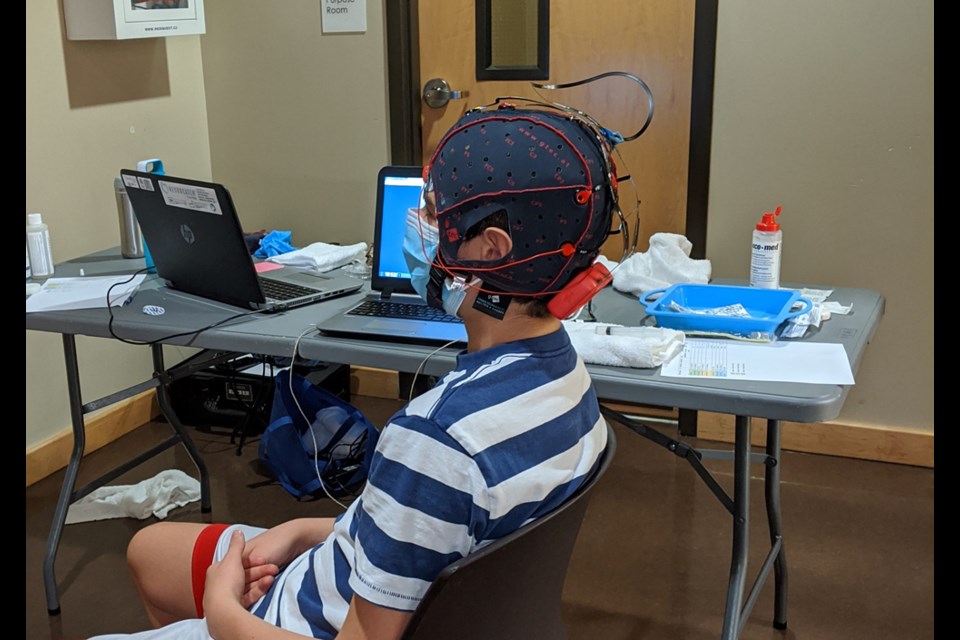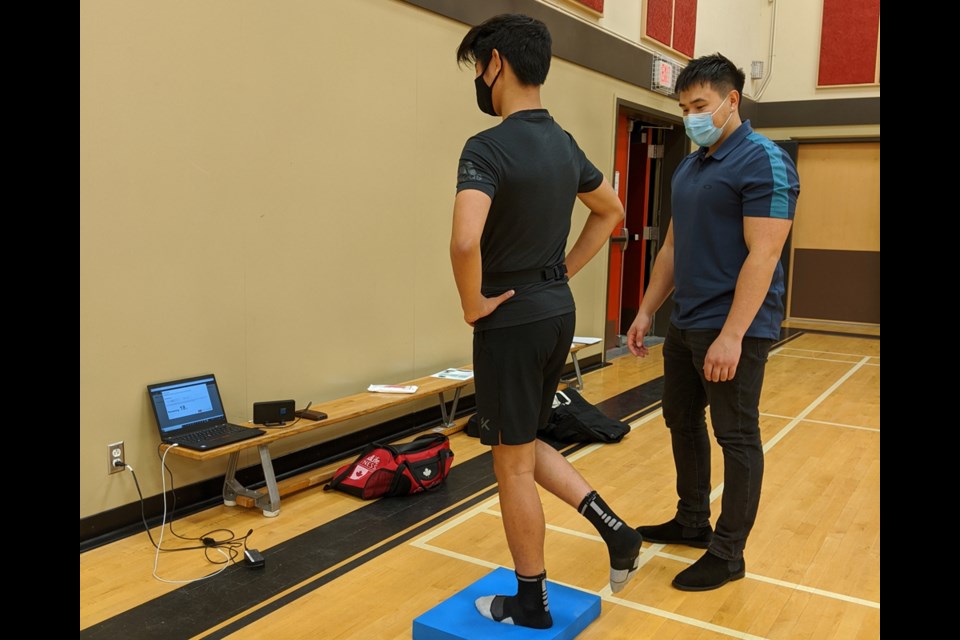A North Vancouver basketball academy has teamed up with a Surrey neuroscience clinic to provide a new form of brain training that could bring a whole new meaning to the phrase “get your head in the game.”
Earlier this year the boys U15 elite youth team from the North Shore Basketball Academy went through a variety of evaluations with staff from the Surrey Neuroplasticity Clinic with the aim of gaining unique insight into the connection between brain and body for the young players. The brain training, dubbed the Brain and Body Performance Optimization program (BBPO), involved a couple of different performance evaluations.
The first test made use of an electroencephalogram (EEG) device that measures brain activity while the subject listens to different types of auditory stimuli. Basically the athlete is sitting down listening to a bunch of beeps, tones and words while wired to a super high tech cloth cap that measures the brain’s responses. The crew at the neuroplasticity clinic then took the results and came back with reports on the brain responses for each player.
“It was pretty cool,” said North Shore Basketball Academy founder and head coach Ryan Lenarduzzi. “[The players] actually have to kind of think in a new way and also be challenged in new ways. So to be honest, a lot of them were nervous, I think, to see how their brains work.”
A second part of the evaluation used portable accelerometer and gyroscope technology to measure overall body function, focusing on things like postural sway and balance.
The goal of the evaluation as a whole is to give a detailed report to each athlete that highlights their strengths and challenges in a wide range of areas related to body movement and the brain. That information can then be used to improve individual or overall team training programs.
“Essentially we have a full plan of ‘here's where Athlete X needs improvement, and here's how we're going to target it,’” said Mathieu Gagnon, the Surrey Neuroplasticity Clinic kinesiologist who developed the BBPO program. “So some things can include working on cognitive training, so we use digitised cognitive games, games that are research based to work on specific areas of cognitive function that need improvement.”
Other information gathered in the tests could tell an athlete what physical challenges they might have related to their sport.
“Maybe you can bench press 300 pounds but you can’t stand on one leg for a long amount of time, and your sport requires a lot of single leg unilateral movements,” said Gagnon. “Balance is something that's really undervalued, I think, at the amateur level. If you look at any professional athletes and their offseason training, they're always incorporating high level balance exercises into their training.”
The team from the North Shore Basketball Academy is the first to do a full assessment using the BBPO program, which has been a thrill for Gagnon.
“It's been really, really awesome and exciting to work with [Ryan’s] team,” Gagnon said. “He's got really dedicated players on his team that are just a pleasure to work with. They really absorb the information, they're really excited about learning more about how to make their game better.”
Lenarduzzi said he is hoping to bring the program to more of the approximately 200 players in his academy. The U15 team that has already tried it out will continue to work with Gagnon and his team, eventually taking a trip out to Surrey where they can work with even more precise body and brain evaluation equipment in the neuroplasticity clinic.
The experience has been an interesting one for the team, said Lenarduzzi, particularly during a year in which COVID-19 has severely restricted their ability to play games or even run contact drills.
“With COVID, you can do the same drills over and over again and you can progress, but finding other ways to give the kids a bit of an advantage is always what we’re looking for,” Lenarduzzi said. “It’s essentially training their brain to be better, which is awesome. … Any time that your brain speeds up in sport, you’ve got better opportunities.”




